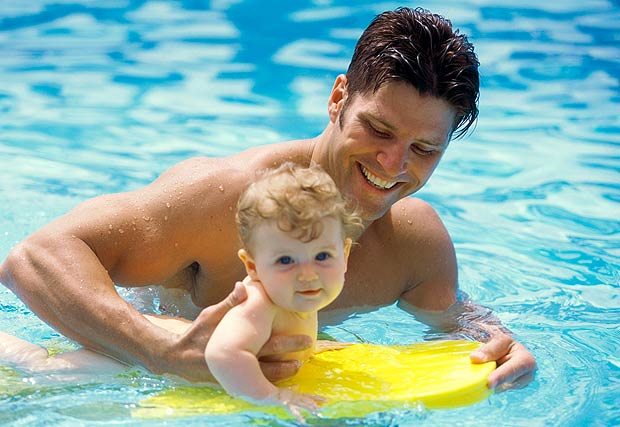TVH Physician Saves Two Brothers' Lives While on Vacation
As summer heats up and swimming is a popular activity in Southern California, remember to never leave children unattended near water. Drowning is the second leading cause of injury-related death in children age 14 and younger.
The story below, written by Temecula Valley Hospital Assistant Medical Director Robert Steele, MD, serves as an important reminder to always keep a close eye on all children swimming and the importance of CPR training. Kudos to Dr. Steele for his quick thinking for saving lives, even while on vacation.
Imagine, for a moment, Cabo San Lucas — warm winds, the bluest ocean, party music pumping in the background, and a giant pool. In the pool is the swim up bar, a fountain and plenty of fun. It is a family paradise. There are few hundred people, mostly families with children. It’s my son’s 10th birthday and we spent a wonderful morning playing in the pool.
Suddenly a muffled voice is heard. “Oh my god, oh my god. My baby! My baby! My baby! The person pleads, "is there a doctor? Please!"
The roar silences. The crowd is still. Time stops.
A two-year-old baby boy is being carried to the side of the pool looking pale and limp. He looks dead. I run from the other side of the pool and find he is unconscious. On first exam, he is so pale and so limp, I think he is gone. I am sick. I begin quickly with a finger sweep that is productive but I can’t get all the soft pieces of something out as I mostly smash them into the cheek. I do my best.
I give the baby two quick breaths. I get no response and suspect this is going to be more for the parents than the child. I really have lost hope and my young kids are 10 feet away, watching their dad hovering over this dead baby. What will I say? I feel for a pulse. None. More breaths. More CPR, more breaths. There is a crowd around me, mostly watching in horror. I shout out the usual: call 9-1-1, get oxygen!
The Father is Crying, Watching Me
I continue CPR on the child and blow more breaths, more CPR. A miracle happens and I feel a pulse. In front of my eyes I see this pale, lifeless form regain color. I have hope. I begin CPR faster than any AFIB RVR heart has ever gone. I can feel in my hands the pulse improving getting stronger, faster and then...a breath, a strangled, harsh but beautiful breath. The baby then let out a whimper and then, ever so softly, a cry. No tears. Just a cry. The crowd erupts! It was pure joy as we all went through the same loss, hope and then complete relief.
Less than 10 seconds later the same “Oh my God” is heard. Same tone, same silence. Time stops. Again. The two-year-old's three-year-old brother is being carried to the other side of the pool. Limp, lifeless, and pale, I run to the child. He is unconscious, pulseless and not breathing.
We start with breaths and move to CPR. This time I have a team with me: an anesthesiologist, a dentist and a CPR instructor. We are furiously working both CPR and mouth to mouth. I have no pulse and ask for an EpiPen. A mom brings her child’s pediatric EpiPen. BAM! Once in the thigh (although truth be told I stabbed myself as well, it was wet and hard to hold). He seems to respond and I now have a slow bradycardic pulse. A second dose of Epi in the other thigh. His pulse goes from slow to fast and the color is improving. Mouth to mouth continues.
We work on this child for 10 minutes when oxygen is brought down. The paramedics arrived for the first child and then are sent to us. I am handed a blade by the anesthesiologist and as I enter the oropharynx, the child gags! It was the first and only sign of life. As a unit, we carry him to the ambulance and to the hospital.
Video Footage Told the Story
Video footage later showed Stephen, the 2-year-old, and his brother Jeremy, 3, both slipped into the water while his parents were only four feet away in the water. There was a fountain that obstructed the father's view and he could not see what had happened in a split second. Stephen was under water for about two minutes. Jeremy was under water, face down, for over four minutes. Jeremy was intubated and flown from Cabo to Stanford’s Lucille Packard hospital. He spent two weeks in the ICU, recovering from ARDS on a ventilator. His first words post extubation were, “Dad, can I watch a movie?” Both children have made a complete recovery with no neurologic impairment.
I will forever be changed, touched and blessed to have been the guardian angel in the right place at the right time.
You can say that you don’t believe in miracles but I have seen one...make that two.
Robert Steele, MD, MBA, FACEP
Corona Regional Medical Center Medical Director
Temecula Valley Hospital Assistant Medical Director

